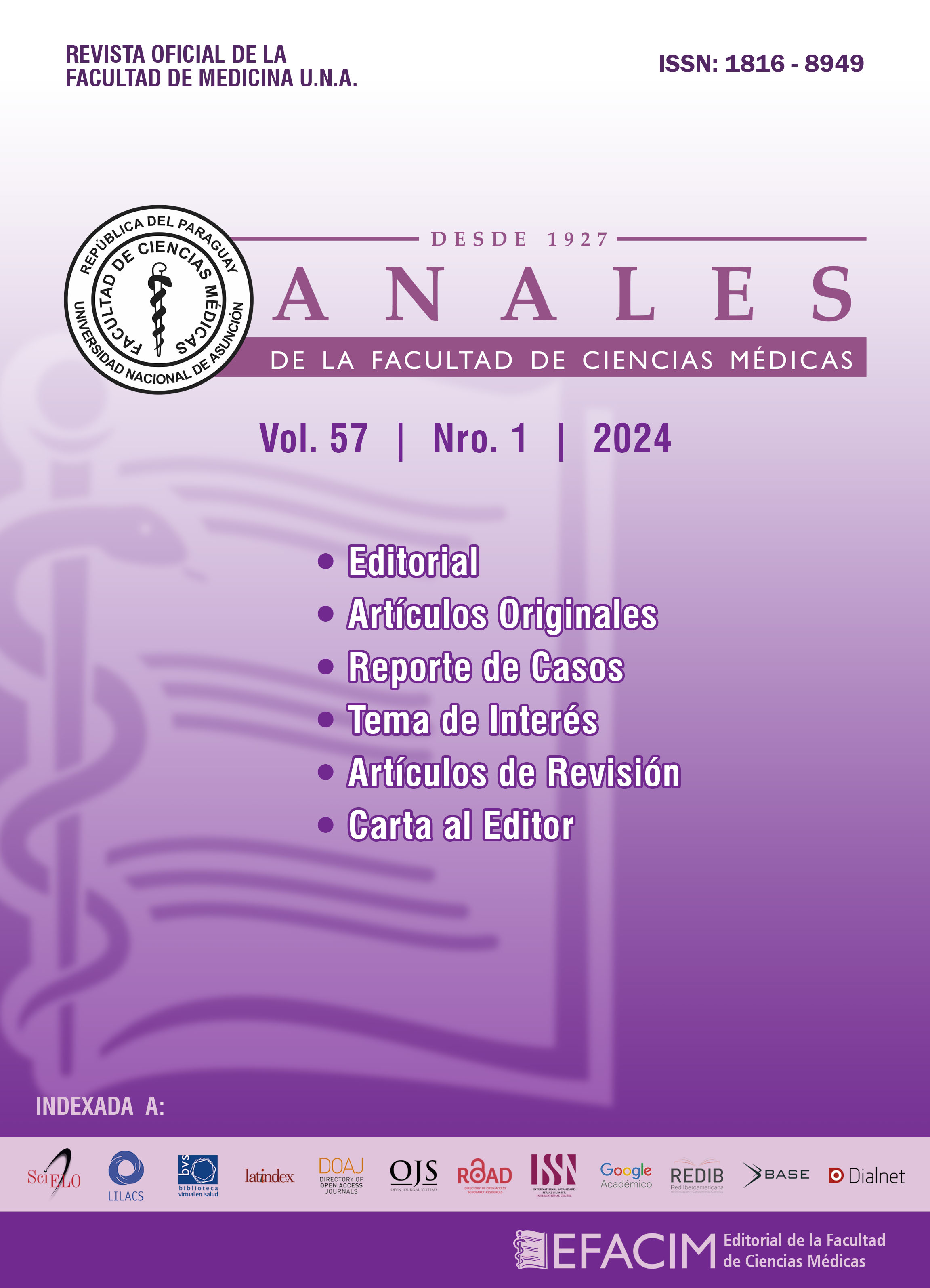Complicaciones por cirugía oncológica mamaria
Palabras clave:
Cáncer de mama, frecuencia, complicación post quirúrgicaResumen
Introducción: Cada año en América Latina, más de 200,000 mujeres son diagnosticadas con cáncer de mama. Como parte del tratamiento de esta enfermedad, la cirugía es uno de los pilares fundamentales. El acto quirúrgico es una experiencia extrema para el paciente y el cirujano, necesaria en esta patología para el tratamiento completo y, como todo acto médico, no está exento de complicaciones. En Paraguay no se cuentan con estadísticas sobre la prevalencia de las complicaciones debidas a cirugías por cáncer de mama, por lo que este trabajo tiene como principal objetivo establecer dicha frecuencia en un hospital de cuarto nivel de complejidad. Materiales y métodos: Estudio retrospectivo, observacional, de corte transversal. Muestreo no probabilístico de casos consecutivos. La selección de sujetos de estudios se realizó de la población de pacientes que fueron sometidos a cirugía por cáncer de mama, en el Hospital de Clínicas en el periodo enero de 2018 a agosto 2022, y que cumplan con los criterios de inclusión y exclusión. Todas las variables han sido extraídas de la ficha clínica y fueron documentadas en el formulario de registro de datos. Se esperaba una frecuencia de 42 % de complicaciones post quirúrgicas utilizando el programa estadístico EPIINFO 7 para un IC de 95% a precisión de 5%, el tamaño mínimo a incluir debía ser de 143 pacientes. Resultados: Se analizaron 203 historias clínicas de pacientes con diagnóstico de cáncer de mama que fueron sometidas a cirugía como parte del tratamiento, correspondientes al periodo comprendido entre enero de 2018 a agosto de 2022. Cumplieron con los criterios de inclusión 201 pacientes. Se registraron un total de 92 pacientes que presentaron alguna complicación relacionada a la cirugía, que corresponden 46 % del total de pacientes en el periodo de tiempo estudiado. De las complicaciones encontradas, 40 desarrollaron seromas, representando el 43% del total de pacientes con complicaciones; 18 pacientes tuvieron infección de la herida operatoria, representando el 20%. 7 pacientes presentaron dehiscencia de la herida operatoria, siendo el 7,5% del total; y 5 desarrollaron un hematoma, siendo el 5,3%. Entre otras complicaciones encontradas, 4 pacientes presentaron linfedema (4,3%), 4 dolor crónico (4,3%), 3 extrusión de prótesis mamaria (3,2 %), 2 de celulitis del miembro superior afecto (2,1%), 2 presentaron necrosis del complejo areola-pezón (2,1%), 1 sufrimiento de piel sin necrosis, 1 sufrimiento del complejo areola-pezón sin necrosis (1% ambos), 1 presentó fistula (1%), 1 disfunción del miembro superior homolateral (1%), y una contractura capsular (1%). Discusión: Se registraron 92 pacientes con una complicación post quirúrgica luego de una cirugía por cáncer de mama; representa así el 46% del total de pacientes estudiados. Esta prevalencia se corresponde con lo publicado en la literatura (2). En cuanto a las complicaciones encontradas, la más frecuente en nuestra revisión fue el seroma, que se presentó en un 40% de las complicaciones. Las publicaciones describen a esta como una de las complicaciones más frecuentemente relacionadas a la cirugía mamaria, con frecuencias que varían desde 18 al 86% según diversos autores. Conclusión: De 201 pacientes que cumplieron con los criterios de inclusión y exclusión, se registraron un total de 92 pacientes que presentaron alguna complicación relacionada a la cirugía, que corresponden 46 % del total de pacientes en el periodo de tiempo estudiado. La complicación más frecuente fue el seroma. Todos los hallazgos de este estudio se correlacionan con lo encontrado en la literatura.





